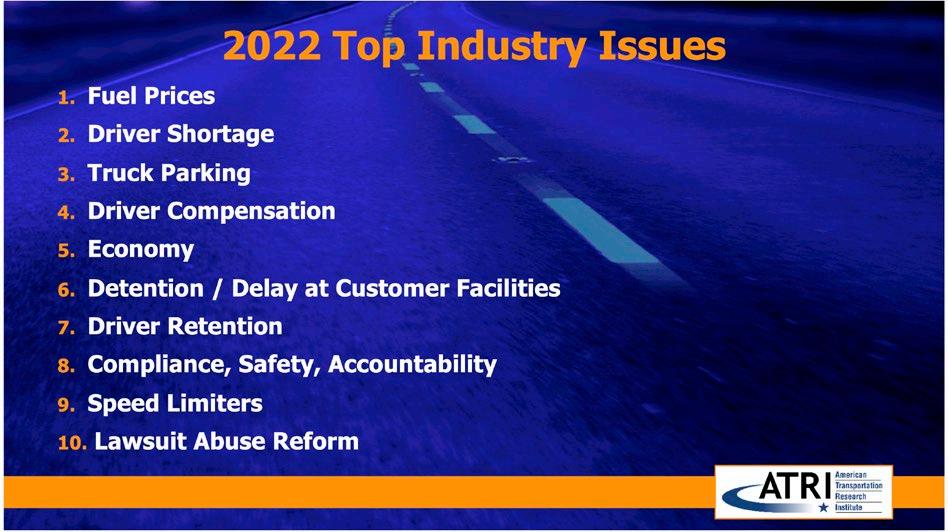
4 minute read
AS A COMPETITIVE ADVANTAGE Sustainability
Sustainability for any industry is in constant flux of change –and some would say this is even more in the food industry. Once a food company implements more sustainable operations, more ideas and possibilities come into play.
The State of Supply Chain Sustainability 2022 report from the Council of Supply Chain Management Professionals says there is a 23 percent increase in pressure from investors to improve supply chain sustainability measures. The importance of lessening carbon emissions and focusing on environmental responsibility will continue to rise, and the supply chain industry must jump on board.
History of Sustainability in the Supply Chain
A timeline from Spend Matters on sustainability efforts within the supply chain says the idea of “sustainable development” came in 1987. The Elkington’s Framework established a sustainability model initially in 1994 that looked at a company’s social, environmental, and economic impact. The world spent the next 20 years working to ensure sustainability efforts were being taken seriously. It was 2016 when The Paris Agreement, a legally binding international treaty for climate change, went into full effect. Soon, countries started adding National Action Plans to their business policies. Today, the United Nations reports 198 countries have some sort of environmental framework law in place.
The State of Supply Chain Sustainability 2022 report says more evidence emerged in 2020 showing an acceleration in supply chain sustainability efforts as a “risk management measure and a way to strengthen their supply chain resilience.” That idea spread even faster in 2021.
The report found that the COVID-19 pandemic did not stop firms from staying true to their sustainability goals. Even during unprecedented times throughout 2021, nearly 80 percent of firms surveyed said they were either keeping their commitment to supply chain sustainability the same or increasing it.
Supply Chain Sustainability in 2023
Harvard Business Review says more and more larger corporations are making a commitment to only partner with suppliers that have social and environmental standards. What they really want to see is their first-tier suppliers hold the same standards with their suppliers as well, and so on as a trickle effect.
Sutainability standards take time to put into regular practice, and it needs true buy-in across the board for standardization to be solidified. Environmental, social, and governance (ESG), is becoming a hot topic amongst supply chain managers, according to Assent. ESG covers the top three areas that affect the internal makeup and external effects of a business. It gives companies a closer look into their supply chain operations to understand where the material comes from, who handles the materials, and what journey it takes to reach its final destination.
The State of Supply Chain Sustainability 2022 report shows the top areas of concern for firms with supply chain sustainability goals are climate change mitigation, energy savings and renewable energy, and employee welfare and safety. Focus on climate change mitigation increased by 50 percent from 2020-2021. The areas with the biggest change increase from 2019-2021 include human rights protection, water conservation, and end-of-life management and supply chain circularity.
Lack of Visibility and Internal Pressures for Sustainability Initiatives
Supply chain executives are under a lot of pressure to deliver results showing significant sustainability changes to business processes and procedures. The State of Supply Chain Sustainability 2022 report found there has been consistent pressure from stakeholders for executives to pursue supply chain sustainability goals. Corporate sustainability is becoming the new goal, which lends more support to executives looking for ROI-backed initiatives.
There are plenty of firms ready to jump on board with sustainability efforts, but are unsure of where to start. Several organizations do not have the visibility to see upfront what’s really missing or causing environmental issues. Supply chain executives are tasked to come up with sustainability initiatives that will pinpoint where emissions and waste are produced in their supply chains, and where labor inequalities are happening across their network. And, once firms gather this data, it tends to be information overload.
IT.
Deloitte Principal of Digital Supply Networks Leader
Vadhi Narasimhamurti says, “Organizations continuously face the challenge of better leveraging the data they have to make informed decisions. While the volume and nature of data available to organizations has exploded in the recent years, the ability to translate that into meaningful, actionable, and real time insights is still lacking, both within the four walls of the enterprise and across the broader end-to-end value chain.”
Food Shipper Opportunities for End-to-End Supply Chain Transformation
Just as it takes time to generate the buy-in for new initiatives and innovation, the approach to implement an end-to-end supply chain transformation focused on sustainability will also be a process. Logmore says end-to-end supply chain visibility provides businesses with better ways to communicate internally with their teams, as well as externally with partners and customers. Having collaborative, multi-tier supply chain planning and management solutions offers more insights in how to improve processes and reduce risks. Research from Gartner shows machine customer demand will continue to rise over the next 10 years, and currently only 15 percent of supply chains are properly positioned to respond to the ongoing requests. Real-time supply chain visibility platforms, such as FourKites® and project44™, provides detailed insights and workflow tools for shippers and carriers to have a streamlined supply chain process.
Gartner says 38 percent of supply chain organizations are improving technologies to support end-toend processes. There needs to be a clearly focused plan for a complete digital transformation. This can include integrating advanced analytics, cross-functional collaborations, data-driven decision making, planning organization redesigns, and accelerating cybersecurity strategies.
According to Gartner’s Top 8 Supply Chain Technology Trends report, some of the most important emerging technologies in the supply chain space include:
1. Hyperautomation - Artificial intelligence, machine learning, smart machines, robotic process automation, and more help to complete tasks and activities the once required human interaction.
2. Digital Supply Chain Twin - A comprehensive digital version of the physical supply chain as a foundation for local and end-toend aligned decision making.
3. Immersive Experiences & Applications - Using virtual reality, augmented reality, and mixed realit to help users interact with a virtual world.
4. Edge Ecosystems - Edge computing and edge data processing combined and delivered through human interaction, devices, smart machines, sensors and computing systems.
5. Supply Chain Security - An increase in enforcement on a physical and digital level to protect internal information and customer data.
6. ESG - Corporate responsibility and evaluation measures that look closer at a company’s social and environmental impact.
7. Embedded AI & AnalyticsReal-time reporting, interactive data visualization, and advanced analytics delivered straight to enterprise business aplpications.
8. Augmented Data IntelligenceExisting and new technologies that offer advanced data processing, predictions, and suggestions that lead to a more connected supply chain.
Sustainability initiatives will continue to evolve, and more advanced innovations will come into play as goals for 2030 are accomplished. Supply chain sustainability practices and capabilities are growing fast and firms of all sizes understand that sustainability needs to be at the core of every business’ operations










